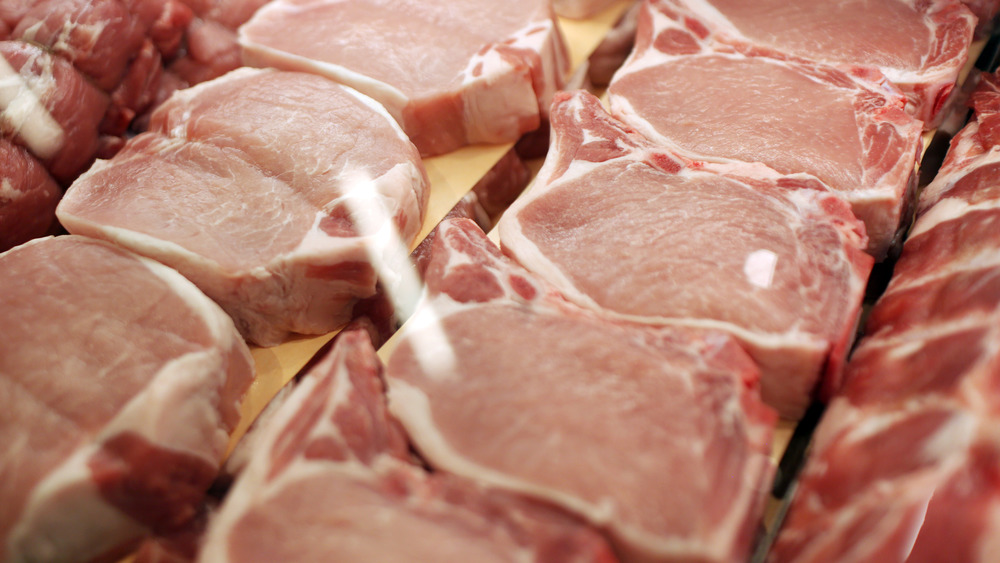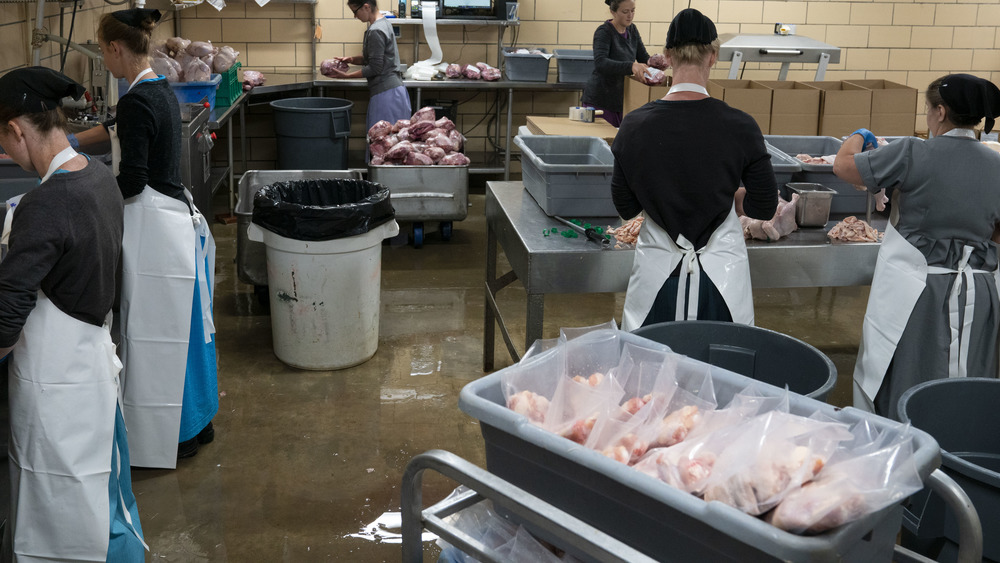Working At A Slaughterhouse Got Even Harder. Here's Why
It's easy for us to forget where our food comes from when we go shopping at our local supermarkets. Fruit and veg are stacked in neat, colorful piles, and meats are either displayed in pristine cases or packed in individual disposable trays and wrapped in plastic to avoid any type of contamination.
But the journey from the industrial farm to the supermarket isn't as tidy as it might appear to consumers and as a result, meat processing workers are coming forward to ask the government to slow down production lines because they are now slaughtering between 1,230 to 1,300 pigs an hour (via Reuters), and this wasn't always the case. In 2019, the Trump administration changed the rules governing pork inspections, because they said the regulations had not been updated for some time. Before the 2019 regulation change, processing plants were mandated by law to slaughter no more than 1,106 pigs an hour. The actual average, according to the USDA, was "closer to 977" (via Food & Wine).
The 2019 changes remain controversial because the new rules allowed pork producers to police themselves on the food safety front, and because they expose pork processing workers to more injuries than any other production sector. Today, more meatpacking workers are reporting injuries that include lacerations that need stitches. The Conversation also looked at the psychological injuries to slaughterhouse workers, which included stress, depression, paranoia, anxiety, and anger.
It will be tricky for the Biden administration to undo pork processing rules
Workers in the country's poultry plants got lucky. Not long after President Joe Biden took office, the new administration withdrew a yet-to-be-approved Agriculture Department measure to increase the maximum number of chickens to be processed from 140 to 175. Labor groups were up in arms over the measure which had been approved by the Trump administration, in part because workers were not only getting hurt – they were also getting sick. When it reported the issue, HuffPost pointed to a study showing that COVID-19 transmission rates were higher in plants that had government permission to increase the number of chickens they could kill in an hour.
Since the pork processing law was passed long before the new administration stepped in, lawyers have told Reuters that the legislation will be more difficult for the Biden administration to undo. The USDA has already said it wouldn't roll back the Trump-era regulation, but it said it would look into the matter. In the meantime, slaughterhouse workers and the unions that represent them can only hope that the situation doesn't become grimmer than it already is.

